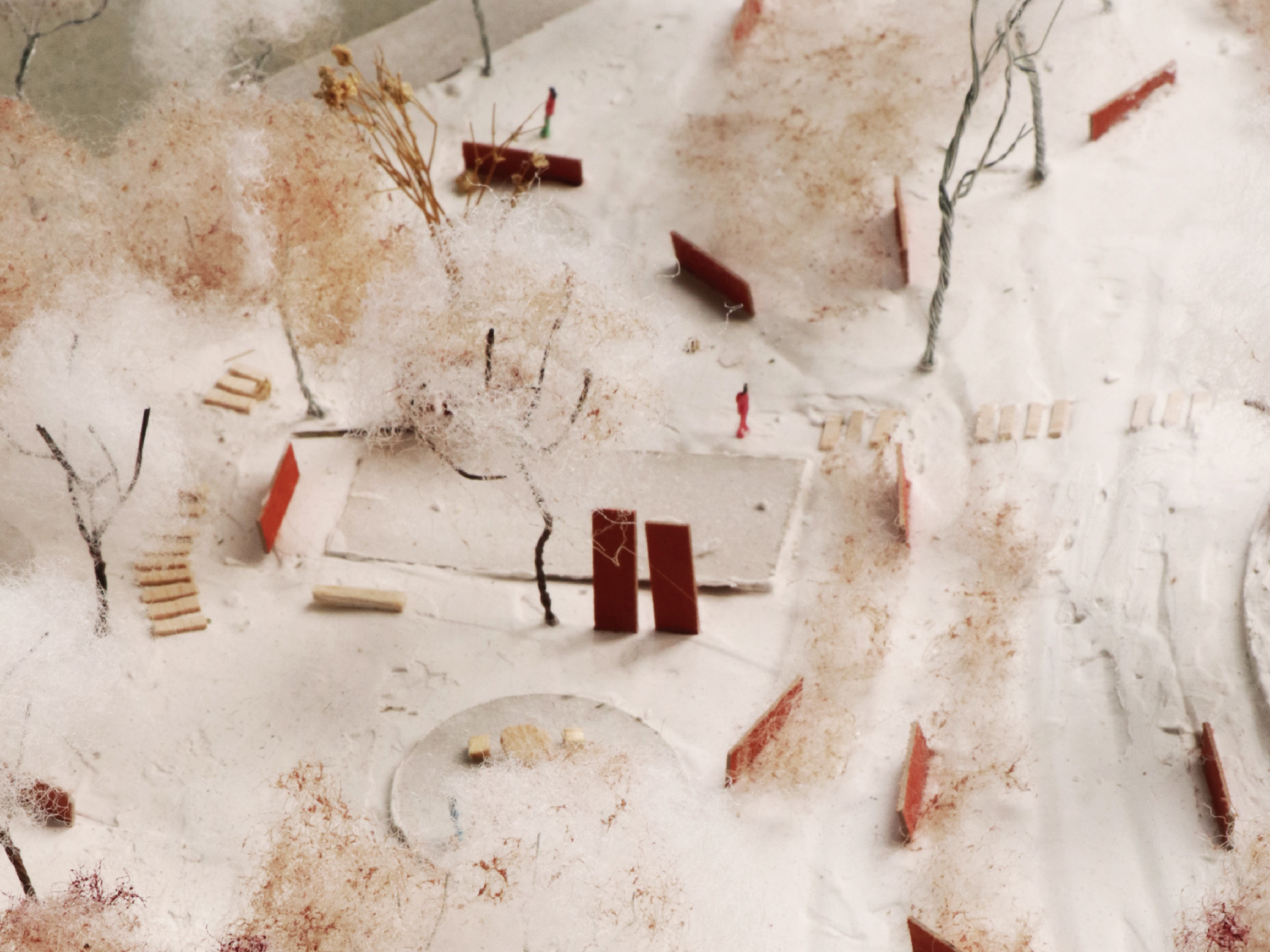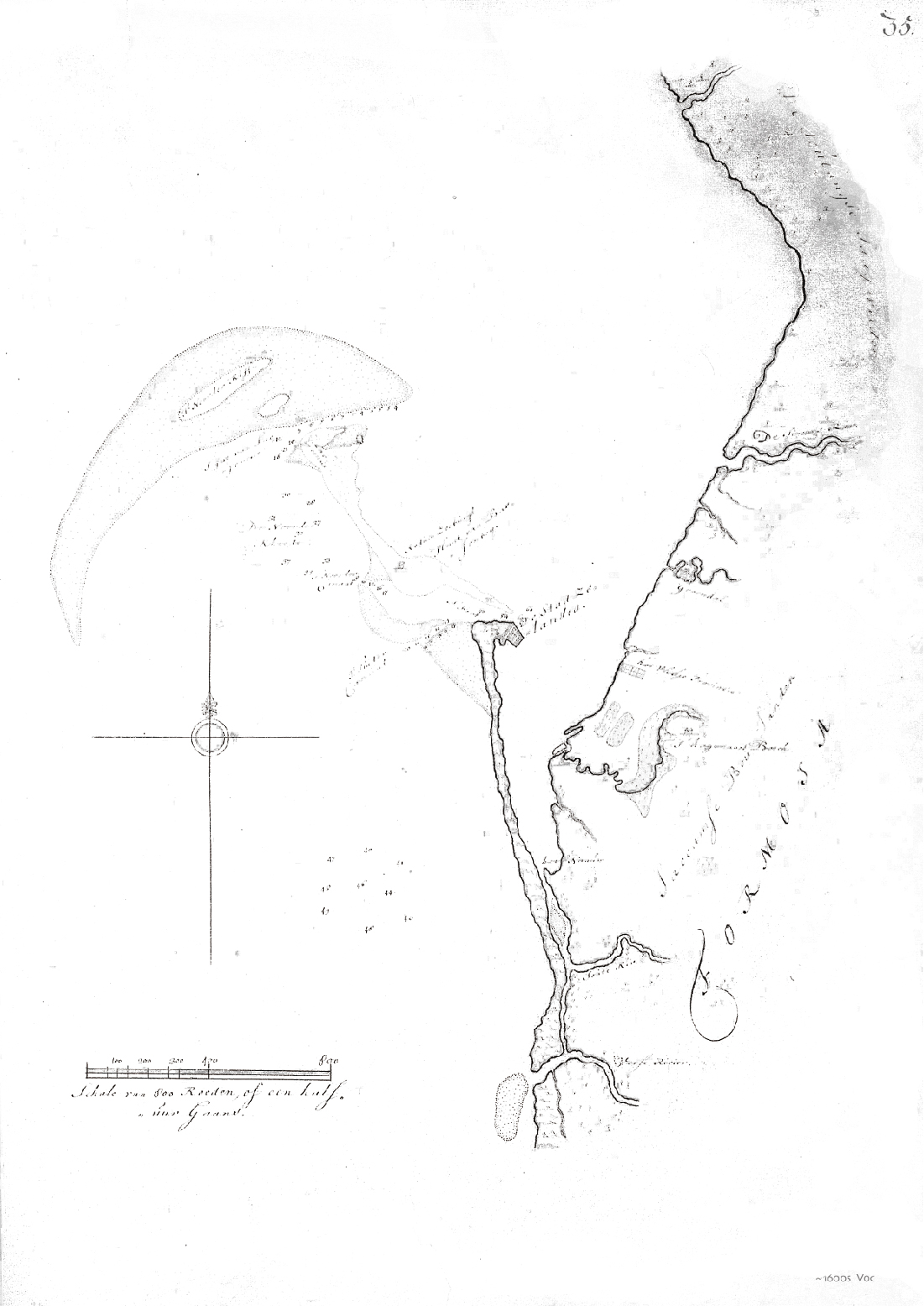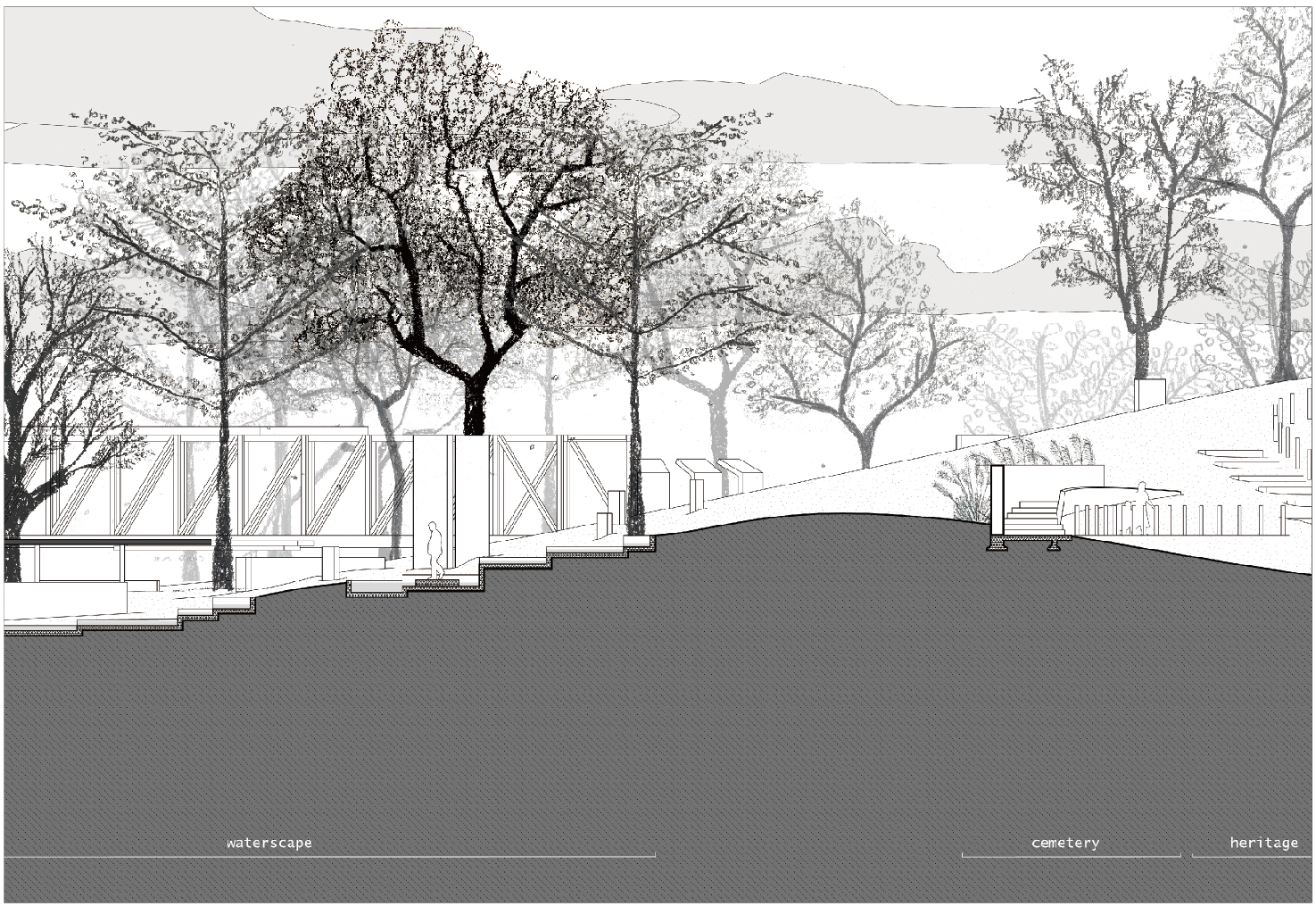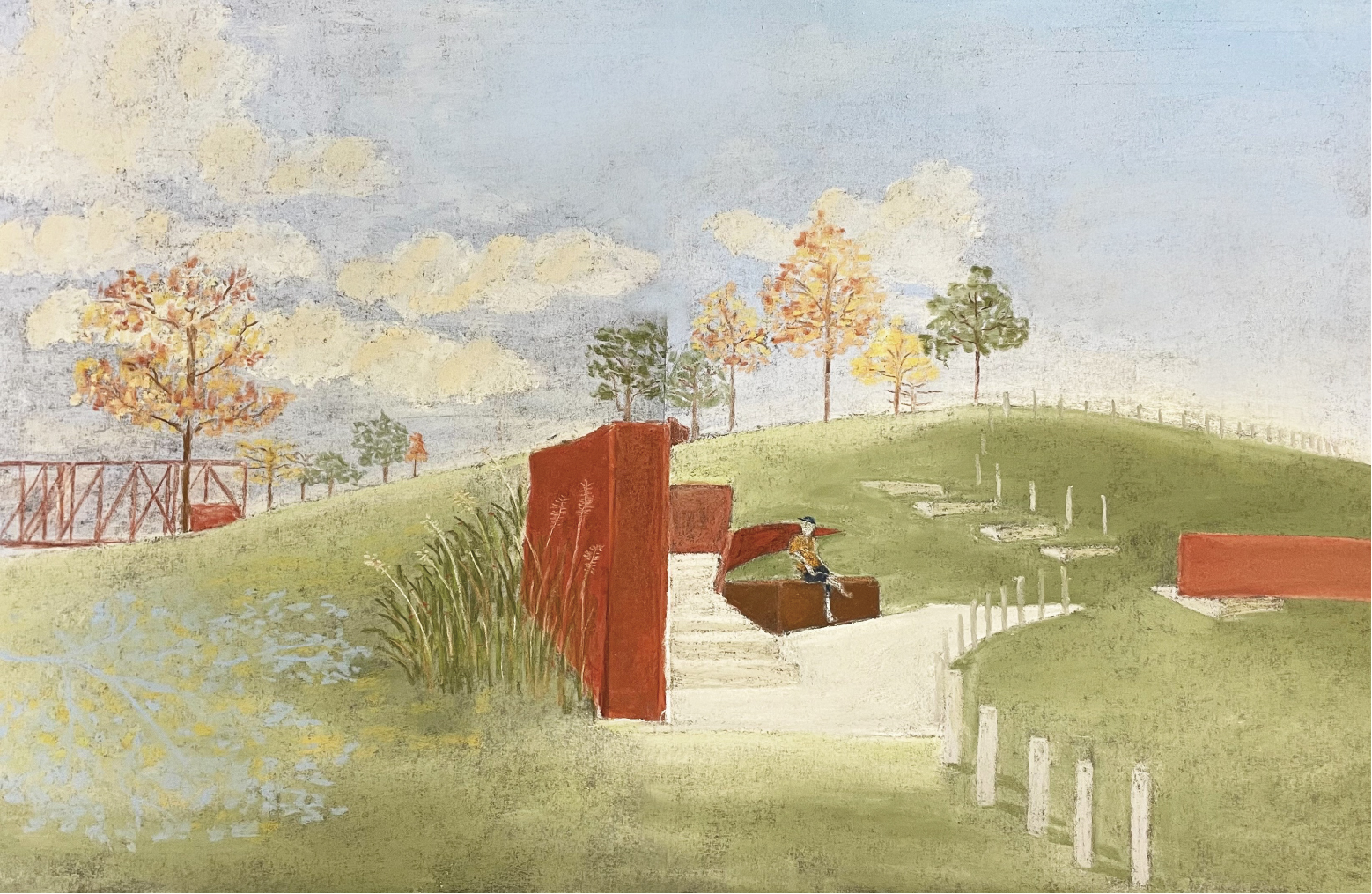沙鯤是自然地景的代名詞,描述隆起於海面的沙丘如鯨魚的背脊,漁火則是聚落與自然最初的狀態。
沙鯤漁火描述了過去聚落與地景的聯繫,但人們因追求恆定與安全而向自然築起藩籬,島嶼邊緣最原始的樣貌在人造物的擴張下逐漸消亡,由海而生的古老聚落亦面臨著與環境脫離的現象。
古老的地名利用鯤鯓、山去描述此地景透露出其過去對於聚落巨大的意義,在當代卻成為荒地產生斷裂與空白。被墓園所佔據的地景真空般的存在於當代,在轉型為觀光的聚落中成為矛盾,本質上卻亦能夠被歸類為遺跡,是貫穿時間軸的場所。
古老的聚落與現代化浪潮的拉扯、郊區長期以來被都市吞沒的命運,我想在這樣的當代重新尋找地景與聚落的聯繫。
我試圖反轉此負空間,使其成為從聚落到海、海到聚落的樞紐。
保留純粹的空間體驗作為對過去的紀念,同時賦予在未來使用的意義,設計並非完全覆蓋過去,而是有意識的透過保留純粹的空間形式去連結原本的體驗,並留下能因應未來改變的線索。
在這個斷裂的當代透過設計的介入,試圖在都市發展、歷史價值與當地文化互相矛盾卻又相輔相成的關係中找尋平衡。希望長期以來被大量人造物所佔據的地景,最終能卸下長久以來的枷鎖。
Shakun represents the name of the natural landscape, describing the dunes above the sea, which look similar to the backs of whales, while Yuhuo symbolizes the initial relationship between the settlement and nature.
Shakun Yuhuo describes the connection between the settlement and the landscape in the past, while people build barriers between to pursue more stability and safety. The primitive appearance of the edge of the island gradually disappeared under the expansion of urban development. The ancient settlement born from the sea is now disconnected from the environment.
Ancient people describe the great significance of the landscape as the back of the whales or mountain, however it has become a wasteland nowadays. The old cemetery became a contradiction in the settlement which had already transformed into a tourist area, although it can also be classified as a relic.
Trying to find a new balance in the relationship between urban development, historical value, and local culture through the design strategy.
Refilled nature and penetrated paths rebuild the relationship between landscape and settlement, turning the contradictory situation to a new hub. The new structure marks the ridge of the hill, which creates a new image for both harbor and the settlement rising from the sea.
The ancient settlement is facing the wave of modernization. My design is trying to answer the dilemma of the old landscape.





